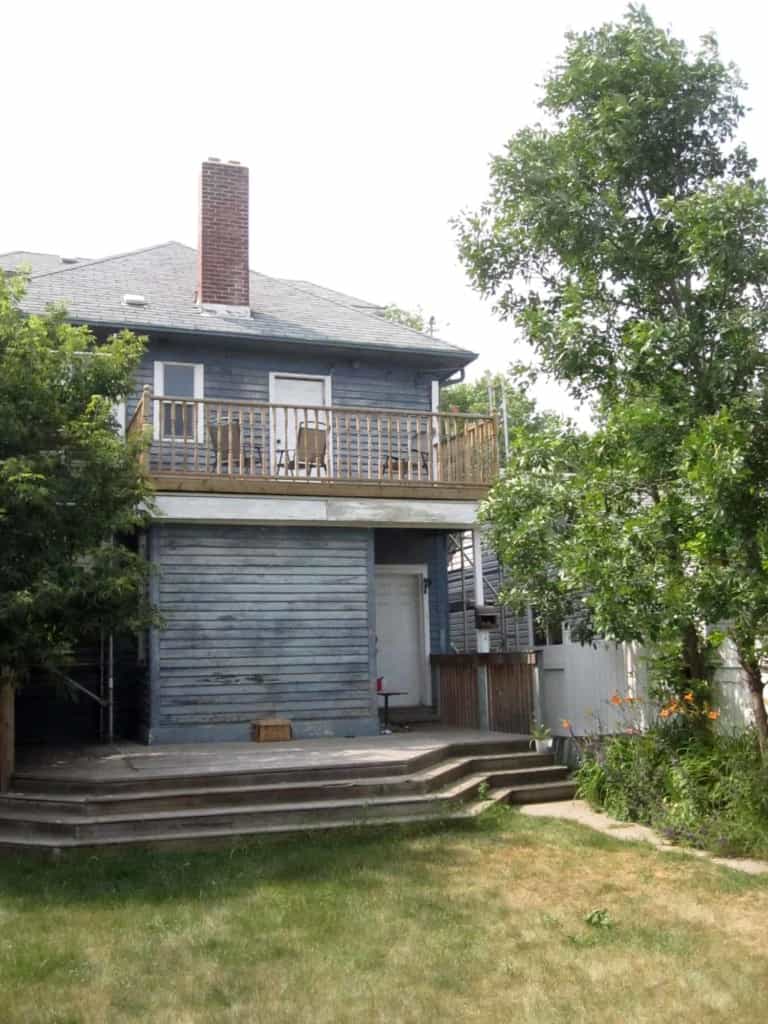Local historical home gets a facelift
Knocking on the front door of the house 11425 95A St was tricky. The porch was being renovated, resulting in piles of broken concrete and earth. A deep pit was in front of the door. It would have taken the legs of an athlete to vault over the pit and knock. Walking to the back entrance gave me an opportunity to take in the historic exterior and find co-owner Sara Melli.
Melli explained Harmon Barto first owned this large American Foursquare Prairie Box home in 1913.
“He was a building contractor … I think he built it and lived in it for a short time,” said Melli.
From the mid 1890s to the late 1930s, the American Foursquare architectural style was popular amongst homeowners. It’s a simple and efficient design, often including charming craftsman carpentry. Here in Norwood, we are lucky to have several examples. In 1913, Norwood was a growing streetcar suburb.
“The farthest north part of the city was right here,” said Melli.
Sarah and Salar Melli bought the house in February 2016 and worked with City of Edmonton staff to get their new home historically designated.
“The exterior of the house is historically designated, the interior isn’t,” said Melli.

The house was gutted before the couple bought the house. Luckily, sections of the exterior are largely intact. I was pleased to see wooden clapboard siding. I also noted decorative rectangular dentil moulding running below the roof.
“We’re going to paint it a darker colour so it will stand out,” said Melli.
Getting took some legwork.
“This house wasn’t on the [Inventory and Register of Historic Resources], so when we bought it, we didn’t know if we would actually be able to designate it,” stated Melli. The couple had to present the house to a historical board. Melli added that “Everybody on the board loved it, and agreed unanimously that it be added to the Inventory.” Once the house was on the Inventory, “it was just a matter of going through the process with the city committees and getting it officially rubberstamped.”
Going through the historical designation process was worth it. The city provided half the funding for renovating the two designated walls, on the condition that the couple is sympathetic to historical character. Historical designation also provides DC-1 zoning, giving owners direct control over their property. Melli told me they were “able to get rezoned to put in the food business on the main floor.”

“The southwest and north wall are designated as historic, so we’re fixing the porch, we completely dismantled it … the contractors are going to be using as much of the original material as they can,” Melli said.
Along with stabilizing the front porch and making it more attractive, the couple also plan to replace existing modern windows with windows containing small panes and repair clapboard siding.
Melli plans on planting a community garden at the front and side of the house. “It’s just something that I decided to do for our community,” she said. Working with Norwood Child & Family Resource Centre, neighbourhood children will learn gardening and develop social skills in the process.
If you own a building which may be eligible for historical designation, contact David Johnston, the city’s principal heritage planner at 780.496.5281.
Featured Image: Salar and Sarah Melli received historical designation for the north and southwest exterior walls of the house. | Chantal Figeat







